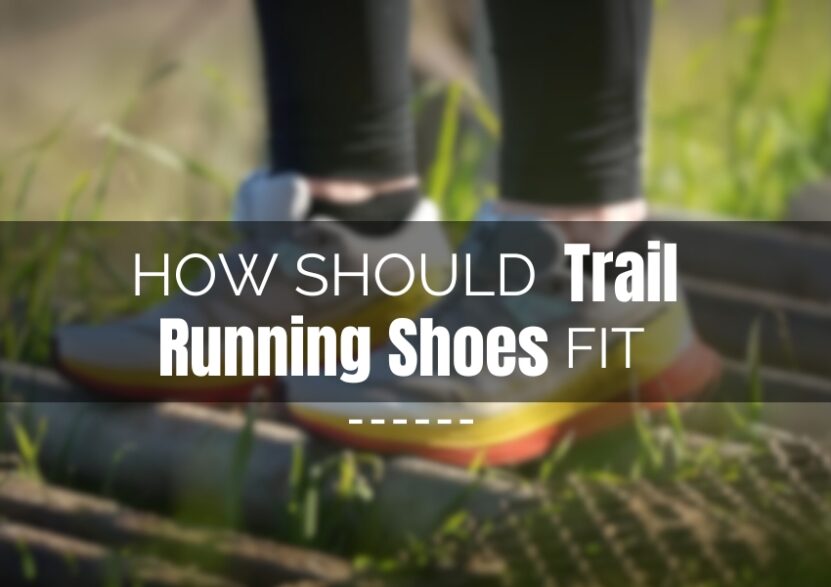Embarking on an adventure in the wild? Running on rugged terrain requires more than just a sturdy pair of sneakers. In this guide, we’ll delve into the art of finding the perfect fit for your trail-running footwear. We’ll explore essential considerations, debunk common myths, and help you understand what it takes to make every step count. Let’s dive in!
Trail-Running Footwear: A World Apart
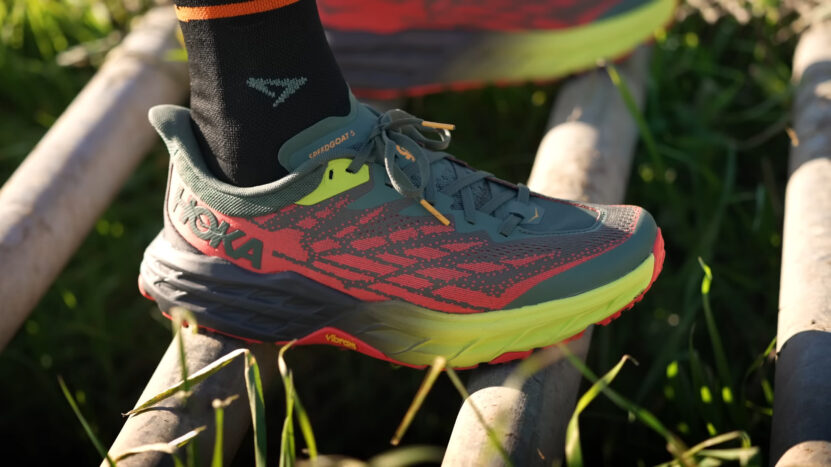
When it comes to exploring the great outdoors, the right footwear is paramount. Trail-running sneakers offer superior traction, support, and protection, ensuring your run is as enjoyable and comfortable as possible. Let’s examine what sets them apart from their road-running counterparts:
- Enhanced Grip: The outsole of trail-running footwear boasts a rugged, multidirectional lug pattern designed to tackle slippery surfaces and uneven terrain with ease.
- Protective Features: Reinforced toe caps and underfoot rock plates shield your feet from potential hazards.
- Greater Support: These sneakers provide increased stability, making it easier to navigate technical trails and steep inclines.
Identifying Your Foot Type
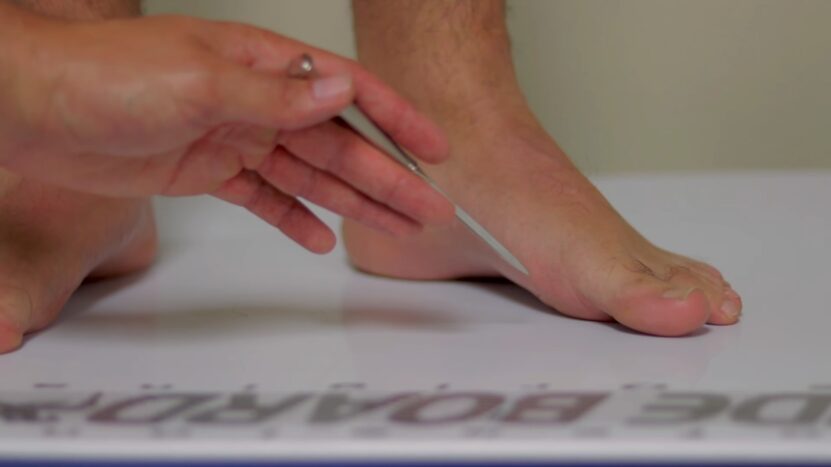
Understanding your foot type is the first step to finding the perfect pair of trail-running sneakers. Here are three common foot types and how they impact your choice:
- Flat Feet (Low Arch): Flat-footed runners often overpronate, which means their feet roll inward excessively. Opt for footwear with motion control and stability features to prevent overpronation and maintain proper alignment.
- Neutral Feet: Runners with neutral arches have a balanced foot strike, distributing impact evenly across the foot. Seek out trail-running footwear with a blend of cushioning and stability to support a natural gait.
- High Arches: Those with high arches typically under pronate or supinate, meaning their feet roll outward upon landing. Choose footwear with ample cushioning and flexibility to promote proper shock absorption and even distribution of impact.
Trying on Your New Adventure Buddies
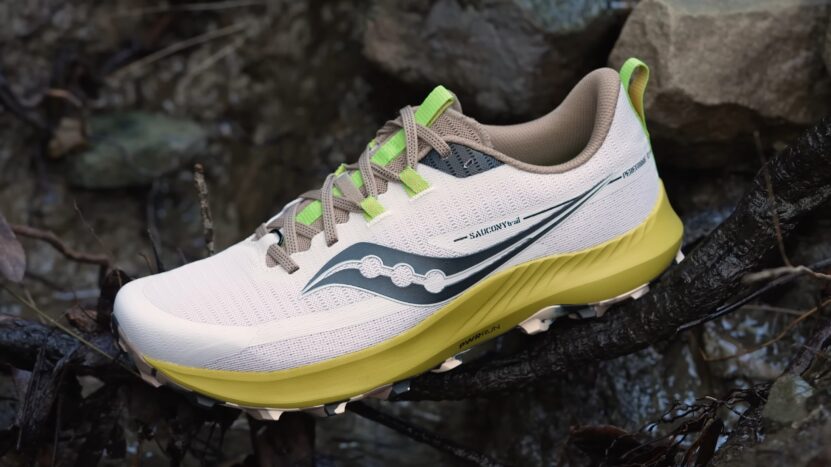
When shopping for trail-running footwear, pay attention to the following tips for an optimal fit:
- Timing Matters: Our feet tend to swell throughout the day, so try on footwear in the afternoon or evening for the most accurate fit.
- Sizing Considerations: Your feet may require a different size for trail running compared to your every day sneakers. Allow for a thumb’s width of space between your longest toe and the front of the footwear to accommodate swelling and prevent toe injuries.
- Lacing Techniques: Experiment with various lacing methods to achieve a secure, customized fit. For example, lacing can help prevent heel slippage, while parallel lacing can alleviate pressure on the top of the foot.
Footwear Adjustments: The Path to Perfection
Even the most well-designed trail-running sneakers may need adjustments to perfectly accommodate your unique foot shape. Consider the following modifications to enhance comfort and performance:
- Insoles: Replace the standard insole with a customized orthotic or an aftermarket insole tailored to your specific foot type. This can improve arch support, cushioning, and overall fit.
- Lacing Alternatives: Experiment with elastic or speed laces for a quick, secure fit that can be easily adjusted on the go.
- Specialty Socks: Investing in trail-specific socks can provide extra cushioning and support in targeted areas, improving the overall fit and feel of your trail-running footwear.
The Importance of Breaking In
Before hitting the trails, give your new trail-running sneakers time to break in. Gradually increase the distance and intensity of your runs to allow the materials to your feet and adapt to your running style. This process helps prevent blisters and discomfort during your first few trail runs.
The Role of Socks in Achieving the Perfect Fit
A great pair of trail-running sneakers are only as good as the socks you wear with them. Socks play a crucial role in comfort, moisture management, and blister prevention. Consider these factors when choosing the right socks for your trail runs:
- Material: Opt for moisture-wicking materials like merino wool or synthetic blends to keep your feet dry and comfortable. Avoid cotton, as it retains moisture and can contribute to blisters.
- Thickness: Choose the appropriate thickness based on personal preference and weather conditions. Thicker socks provide more cushioning, while thinner options offer increased breathability.
- Height: Select a sock height that complements your trail-running footwear and protects against debris, such as ankle-height socks for low-cut sneakers or crew-length socks for mid-cut options.
The Ultimate Trail-Running Checklist
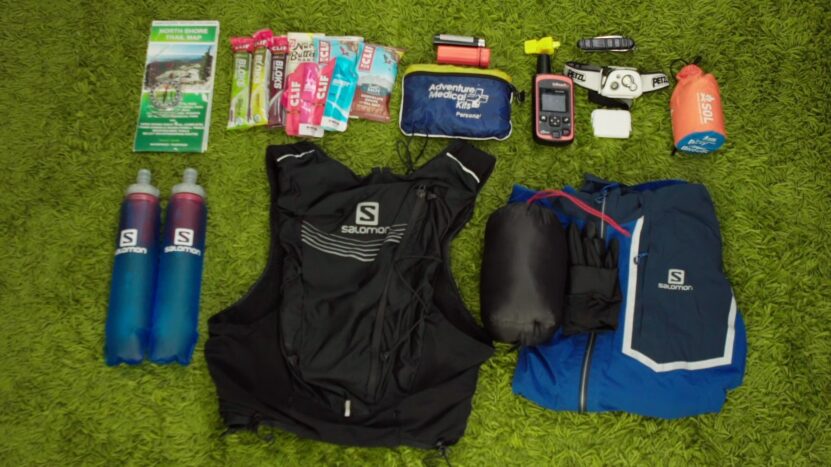
With your perfectly-fitted trail-running sneakers in hand, it’s time to prepare for your next adventure. Keep the following essentials in mind:
- Hydration: Carry a hydration pack or water bottle to stay properly hydrated on the trail.
- Nutrition: Pack energy gels, bars, and snacks to fuel your run and maintain energy levels.
- Safety Gear: Bring a whistle, a fully charged cell phone, and a small first-aid kit for emergencies.
- Navigation: Equip yourself with a map, compass, or GPS device to stay on track and avoid getting lost.
- Weather Protection: Dress in layers and pack a lightweight, weather-resistant jacket to adapt to changing conditions.
- Sun Protection: Apply sunscreen and wear a hat or visor to shield your face from harmful UV rays.
Frequently Asked Questions
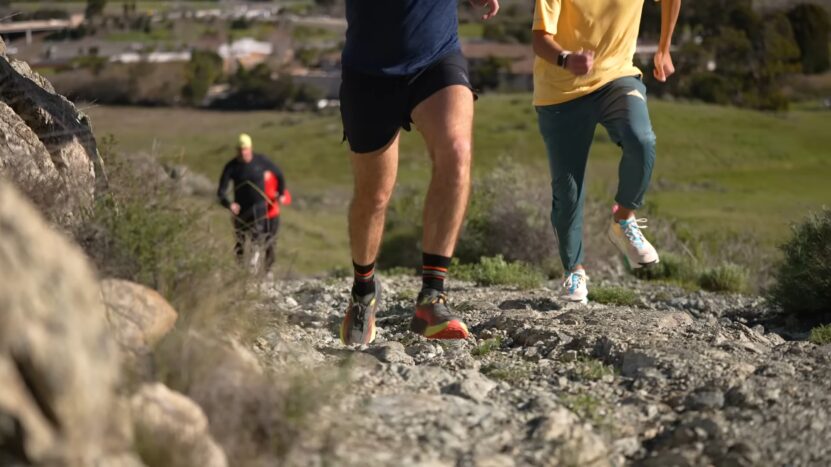
1. How often should I replace my trail-running sneakers?
The general rule of thumb is to replace your sneakers every 300-500 miles. However, this can vary depending on factors such as your running style, the ruggedness of the terrain, and the durability of the footwear. Pay attention to signs of wear and tear, such as reduced traction or compromised cushioning, as indicators that it’s time for a new pair.
2. Can I use my road-running sneakers for trail running?
While it’s possible, road-running sneakers typically lack the traction, support, and protection needed for trail running. Investing in a dedicated pair of trail-running sneakers can significantly improve your comfort, safety, and overall experience on the trails.
3. How do I clean my trail-running sneakers?
After a muddy or wet run, remove any loose dirt by gently brushing or tapping your sneakers together. If necessary, use a mild soap and a soft brush to clean the upper material, and rinse with cold water. Avoid submerging your sneakers or using harsh detergents. Allow them to air dry, preferably in a well-ventilated area and away from direct sunlight or heat sources, which can damage the materials.
4. Is it okay to wear my trail-running sneakers on the pavement?
While trail-running sneakers can be used on pavement, doing so may cause them to wear down more quickly due to the softer rubber compounds used in their outsoles. If you frequently run on both surfaces, consider investing in a hybrid sneaker designed for mixed terrain or having separate pairs for trail and road running.
5. Should I size up or down when buying trail-running sneakers?
Your trail-running sneakers should fit snugly but still allow for some room in the toe box to accommodate foot swelling during long runs. A good rule of thumb is to leave a thumb’s width of space between your longest toe and the front of the footwear. Keep in mind that sizing can vary between brands and models, so it’s essential to try on multiple options and consult sizing charts for the most accurate fit.
If you miss the right size, check out our article on how to make your size bigger shoes fit.
6. Can I use minimalist or barefoot sneakers for trail running?
Minimalist and barefoot sneakers can be used for trail running, but they require a careful transition period and proper technique to prevent injuries. These types of sneakers offer less cushioning and protection than traditional trail-running footwear, making them suitable for experienced runners with strong feet and a well-developed running form. If you’re new to trail running or have concerns about foot and ankle stability, consider starting with a more supportive option.
7. Do I need to wear gaiters with my trail-running sneakers?
Gaiters are not necessary for every trail run but can be beneficial in certain situations. They help keep debris, such as rocks, sand, and mud, out of your sneakers and can provide additional protection against the elements. Consider using gaiters if you frequently run in challenging conditions or if your trail-running footwear has a low-cut design.
Final Words
Achieving the perfect fit for your trail-running sneakers is essential to a comfortable and enjoyable experience in the great outdoors. By understanding your foot type, trying on footwear at the right time, making necessary adjustments, and investing in quality socks, you’ll be well-equipped to tackle any trail with confidence. Now that you’re prepared lace up your trail-running sneakers and venture into the wild, knowing you’ve found the perfect fit for your trail-running adventures. Happy trails!

